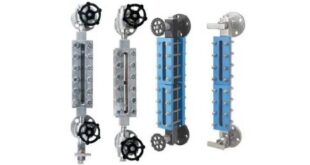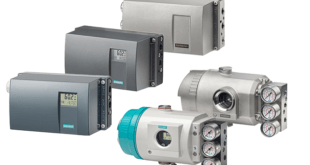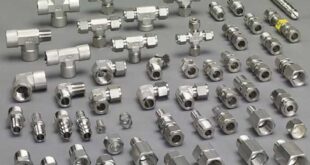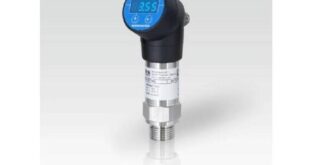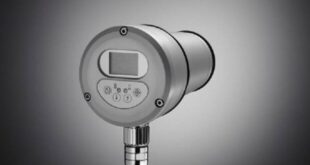Different Types of Flow Meters: Unraveling Details, Sizes, Materials, Standards, Connections, and Applications
I. Introduction
Flow meters are indispensable instruments in various industries, enabling precise measurement and control of fluid flow. This comprehensive guide aims to provide an in-depth analysis of different types of flow meters, unraveling the details surrounding their sizes, materials, standards, connection usage, and applications. Whether you are a seasoned engineer or a novice exploring the field, this guide will serve as a valuable resource for understanding the diverse world of flow measurement.
II. Understanding Flow Meters
2.1 Definition and Purpose
Flow meters, also known as flow sensors or flow gauges, are instruments designed to measure the rate of fluid flow within a system. They play a critical role in industries such as oil and gas, water management, pharmaceuticals, and more.
2.2 Importance in Industrial Applications
Accurate flow measurement is crucial for optimizing processes, ensuring product quality, and meeting regulatory requirements. Industries rely on flow meters to monitor and control the flow of liquids and gases in various applications.
III. Types of Flow Meters
3.1 Differential Pressure (DP) Flow Meters
Differential pressure flow meters operate based on the pressure drop across a constriction in the flow path. Explore variations like orifice plates, venturi tubes, and flow nozzles, understanding their principles and applications.
3.2 Velocity Flow Meters
Velocity flow meters measure the speed of the fluid to determine the flow rate. This category includes devices like electromagnetic flow meters, turbine flow meters, and ultrasonic flow meters, each with distinct characteristics and applications.
3.3 Positive Displacement (PD) Flow Meters
Positive displacement flow meters measure the volume of fluid passing through by isolating and counting fluid segments. Examine types like piston meters, oval gear meters, and nutating disk meters, exploring their working principles and applications.
3.4 Mass Flow Meters
Mass flow meters measure the mass of a fluid directly, offering advantages in applications where density variations are present. Investigate thermal mass flow meters, Coriolis flow meters, and other types, understanding their accuracy and applications.
3.5 Open Channel Flow Meters
Open channel flow meters are designed for measuring flow in open channels, such as rivers and streams. Explore flumes, weirs, and other open-channel flow measurement techniques, considering their applications in water management.
3.6 Vortex Flow Meters
Vortex flow meters operate on the principle of vortices shed by a bluff body in the fluid stream. Delve into their construction, working principles, and applications, especially in steam and gas flow measurement.
3.7 Magnetic Flow Meters
Magnetic flow meters utilize Faraday’s law to measure the flow rate of conductive fluids. Uncover their advantages, limitations, and applications, with a focus on industries like water treatment and chemical processing.
3.8 Turbine Flow Meters
Turbine flow meters employ a rotating turbine to measure flow. Explore their design variations, applications, and considerations for accurate measurement in industries such as aviation fueling and oil refining.
3.9 Ultrasonic Flow Meters
Ultrasonic flow meters use ultrasound waves to measure flow. Dive into the different types, including transit-time and Doppler ultrasonic flow meters, understanding their applications in diverse fluid systems.
3.10 Coriolis Flow Meters
Coriolis flow meters measure mass flow by detecting the Coriolis effect. Examine their construction, working principles, and applications, especially in industries where precise mass measurement is critical.
IV. Flow Meter Sizes
4.1 Standard Sizing Parameters
Understanding standard sizing parameters is fundamental for selecting the right flow meter for a specific application. Explore the factors influencing sizing, such as pipe diameter, flow range, and velocity considerations.
4.2 Sizing Considerations for Different Flow Meter Types
Different flow meter types may have unique sizing considerations. Examine how factors like fluid properties, pressure, and temperature influence the sizing of various flow meters.
V. Materials Used in Flow Meters
5.1 Stainless Steel
Stainless steel is a common material in flow meters, offering corrosion resistance and durability. Delve into the applications and considerations when selecting stainless steel flow meters.
5.2 Brass
Brass flow meters are suitable for certain applications due to their corrosion resistance and cost-effectiveness. Explore where brass flow meters find application and the considerations for their use.
5.3 Plastic (Polypropylene, PTFE)
Plastic flow meters, including those made of polypropylene and PTFE, find use in chemically aggressive environments. Investigate their properties, applications, and limitations in flow measurement.
5.4 Exotic Alloys (Hastelloy, Inconel)
Exotic alloys like Hastelloy and Inconel provide superior corrosion resistance in demanding applications. Explore where these alloys are employed and the advantages they offer in specific environments.
VI. Flow Meter Standards and Compliance
6.1 ISO Standards
ISO standards set benchmarks for the design, performance, and testing of flow meters. Understand the relevant ISO standards governing different types of flow meters and ensure compliance.
6.2 ANSI Standards
ANSI standards provide guidelines for safety and performance in flow meter design. Explore ANSI standards applicable to various flow meter types, ensuring adherence to industry benchmarks.
6.3 OIML Standards
OIML standards, recognized internationally, aim to harmonize flow meter specifications. Familiarize yourself with OIML standards related to flow meters for seamless integration in global applications.
VII. Flow Meter Connection Usage
7.1 Threaded Connections
Threaded connections are common in flow meters, providing a secure and leak-proof seal. Explore the variations in thread types, such as NPT and BSP, and their applications in flow meter connections.
7.2 Flanged Connections
Flanged connections offer versatility in flow meter installation. Delve into the types of flanges, their applications, and considerations for selecting flanged connections in different industries.
7.3 Compression Fittings
Compression fittings provide a reliable and removable connection in flow meters. Understand their applications, advantages, and limitations in specific environments.
7.4 Clamp Connections
Clamp connections offer quick and secure installation of flow meters. Explore their applications and benefits, especially in industries where rapid maintenance is crucial.
VIII. Applications of Flow Meters
8.1 Oil and Gas Industry
Flow meters play a critical role in measuring the flow of oil, gas, and other hydrocarbons in the extraction, processing, and transportation stages. Explore specific flow meter applications in the oil and gas industry.
8.2 Water and Wastewater Treatment
Accurate flow measurement is essential in water and wastewater treatment plants. Investigate how flow meters contribute to efficient water management, treatment processes, and environmental compliance.
8.3 Chemical Processing
Chemical processing requires precise flow measurement for accurate dosing and mixing of chemicals. Explore flow meter applications in chemical manufacturing, ensuring safety and efficiency.
8.4 Pharmaceuticals
The pharmaceutical industry relies on flow meters for precise control in manufacturing processes. Examine how flow meters contribute to ensuring the quality and consistency of pharmaceutical products.
8.5 Food and Beverage
From beverage production to food processing, flow meters play a vital role in ensuring accurate ingredient measurements and maintaining product consistency. Explore flow meter applications in the food and beverage industry.
8.6 HVAC Systems
Heating, ventilation, and air conditioning (HVAC) systems require flow meters for efficient energy management. Delve into the applications of flow meters in HVAC systems, optimizing heating and cooling processes.
IX. Installation Techniques for Flow Meters
9.1 Proper Installation Procedures
Correct installation is paramount for the accurate performance of flow meters. Explore step-by-step procedures for installing different types of flow meters, ensuring optimal measurement accuracy.
9.2 Calibration and Verification
Calibration and verification are essential to maintain the accuracy of flow meters over time. Understand the importance of calibration procedures and how to verify the performance of flow meters.
9.3 Ensuring Reliable Measurements
Various factors can impact the reliability of flow measurements. Learn techniques and best practices to ensure reliable and consistent flow measurements in different industrial applications.
X. Maintenance Practices for Flow Meters
10.1 Regular Inspection Protocols
Periodic inspections are crucial for identifying potential issues before they affect flow meter performance. Establish comprehensive inspection protocols for flow meters to ensure optimal accuracy.
10.2 Preventive Maintenance Measures
Preventive maintenance extends the life of flow meters. Explore proactive measures, such as cleaning, lubrication, and component checks, to enhance the longevity of flow meters in service.
10.3 Troubleshooting Common Issues
Issues such as calibration drift, sensor fouling, and electrical problems can arise. Develop troubleshooting skills to identify, diagnose, and rectify common problems associated with flow meters.
XI. Future Trends and Innovations in Flow Meter Technology
11.1 Advances in Sensor Technology
Innovations in sensor technology are driving improvements in flow meter accuracy and reliability. Explore the latest developments in sensor technology and their impact on flow meter performance.
11.2 Integration with IoT and Smart Technologies
The integration of flow meters with the Internet of Things (IoT) and smart technologies is revolutionizing flow measurement and control. Delve into how these advancements enhance monitoring and decision-making.
11.3 Miniaturization and Portability
Advancements in miniaturization are enabling the development of compact and portable flow meters. Explore the applications and benefits of miniaturized flow meters in various industries.
XII. Conclusion
In conclusion, this comprehensive guide has provided a detailed exploration of different types of flow meters, covering aspects such as sizes, materials, standards, connection usage, and applications. From traditional differential pressure flow meters to advanced Coriolis and ultrasonic flow meters, each type serves specific purposes across diverse industries.
As industries evolve and demand more precise and efficient flow measurement, staying informed about the latest technologies, materials, and standards is crucial. Flow meters are not just instruments; they are integral components that contribute to the success of industrial processes, ensuring efficiency, accuracy, and compliance.
Equip yourself with the insights shared in this guide to navigate the complex landscape of flow measurement with confidence. Whether you are involved in designing systems, selecting flow meters, or maintaining existing installations, this guide serves as a valuable resource for professionals and enthusiasts alike. Flow measurement is an evolving field, and by staying abreast of advancements, you contribute to the progress of industries and the enhancement of fluid flow control and management.
 Ontrose industrial corporation Inc. Engineering and supply of industrial projects
Ontrose industrial corporation Inc. Engineering and supply of industrial projects

